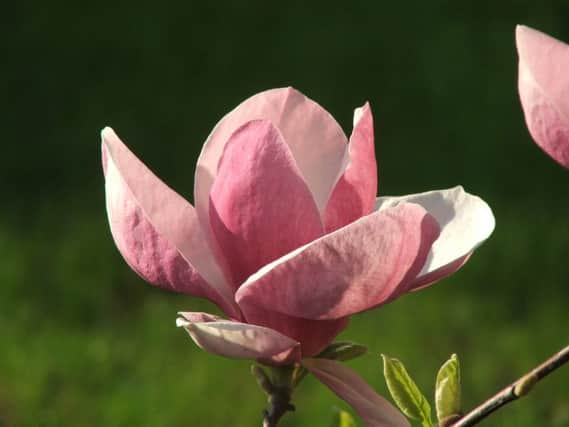BRIAN KIDD: ...on tiny parsnips and jobs for the week ahead


Q: I am growing a half-size cucumber in my greenhouse and have picked three which were lovely and about eight inches long. There are other little ones but they are yellow. KF, Purbrook.
A: Cucumbers need lots of liquid feed. Use Maxicrop Complete liquid fertiliser twice a week. If you do this there will be at least two cucumbers a week.
Advertisement
Hide AdAdvertisement
Hide AdQ: My neighbour bought two twigs of magnolia about six years ago and they have never flowered. DPW, Waterlooville.
A: Fork over a large area of soil beneath the shrub and scatter over half an ounce of sulphate of potash over several square yards. Fork it in and water. Do this in early September. It will induce flowers next spring. Repeat each autumn because some magnolias have to be seven years old before they produce flowers.
Q: There are lots of brown laurel leaves in my garden. Will they compost? PO, Gosport.
A: Yes, as long as you mix them with other green stuff. Laurel leaves rot well if covered with grass mowings in a bin or heap. Add the magic formula: one part urine with seven parts water, sprinkled not poured.
Advertisement
Hide AdAdvertisement
Hide AdQ: I dug some parsnips and they are like small carrots. I am new to allotments and need advice. JD, Waterlooville.
A: Parsnips are a winter crop and will be ready to eat about December onwards. Keep them well-watered and scatter a dressing of blood fish and bone using 2oz per yard run and hoe this into the soil.
Q: I love swede and sowed some seeds at the end of July. They have emerged like mustard and cress. I want to know the distance needed between plants please. GP, Eastney.
A: I love swede! Thin them out so there are five inches between each seedling. Once they are two inches tall fork in fish blood and bone fertiliser, 2oz per yard run and water well. Dust the seedlings with ant powder to prevent flea beatle damage after watering.
JOBS FOR THE COMING WEEK
Advertisement
Hide AdAdvertisement
Hide Ad-Plant out spring-hearting cabbages in rows two feet apart with the plants only nine inches apart. Every other one can be thinned out over winter to provide fresh greens.
-Have you seen the Sternbergia bulbs in packets at garden centres? These gems look like golden crocus but flower in the autumn. There’s still time to find some.
-Outdoor amaryllis and colchicum bulbs are in at garden centres. These will flower in the autumn.
-When digging out potatoes, cut the haulms down to four inches. Remove all weeds which saves much time. Put the haulms in a wheelbarrow. The less they are thrown around the less chance there is of spreading potato blight.
Advertisement
Hide AdAdvertisement
Hide Ad-Look around to see where you can get manure. Leave it in bags until November when it will be ready to dig in.
-Keep a sharp eye out for scorching on the lower leaves of runner bean plants. This is down to red spider mites. Spray with pyrethrum liquid (Pye) during the late evening to control this pest. It is essential to spray the backs of the leaves as that is where the pests are seen.
-Go into the garden an hour after dark and take a torch. You will be surprised at how many slugs are out there. You know what to do; don’t chuck them over the wall. They’ll only come back.
-If you struggle with clay soil a raised bed will help. On a vegetable area they are a boon but in ornamental gardens log rolls are often forgotten which is a pity because if the clay can be covered with bags of compost, it is far easier to manage the garden. Log rolls give flexibility and attractive curved lines look better than straight lines.
Advertisement
Hide AdAdvertisement
Hide Ad-Buy some grass seed to oversow patches, Put 1lb of seed to 10lbs of seed compost into a black polythene bag and leave it for a week. After rain, any time between now and the middle of September, prick over the lawn and scatter on the grass seed/compost mix. The germinating seeds will fall into the holes.
Got a question for Brian? Drop him an e-mail by clicking here.